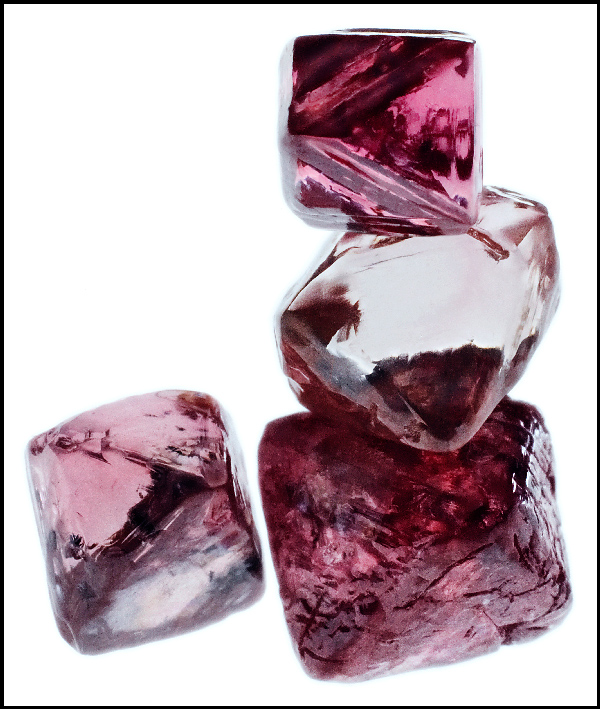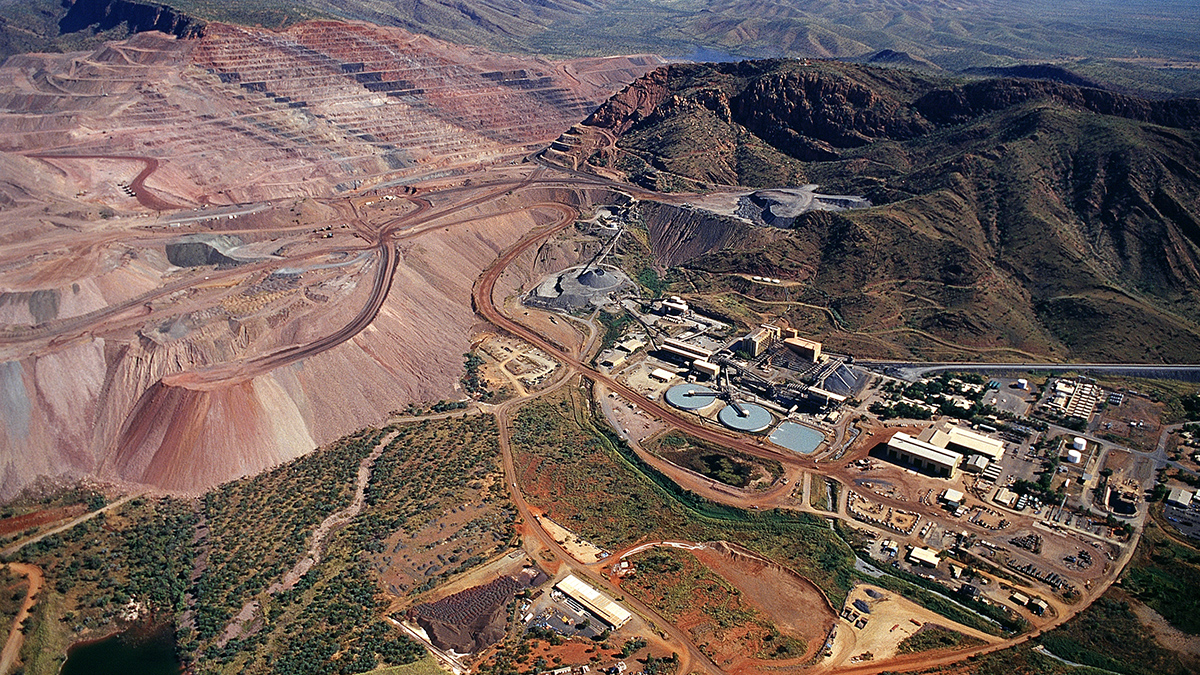In popular culture, diamonds aren’t often associated with breakups. But that isn’t the case in Western Australia’s Argyle diamond mine, once the world’s most prolific source of pink diamonds. Researchers discovered that the Argyle deposit formed when one of the world’s oldest supercontinents began to rip apart, 1.3 billion years ago. The study, published in Nature Communications, showed how the separation of continents might be responsible for rocketing diamonds to the surface and could hint at where other such deposits could be found.
Champagne and Diamonds
Diamonds have long been a feature of stories told by the Miriwoong and Gija peoples of Western Australia. It wasn’t until 1979 that Western geologists stumbled upon the region’s diamonds, too. Argyle shipped its first diamonds in 1983, quickly doubling global diamond production and churning out 865 million carats over its 37-year history. The mine closed in November 2020 after it was deemed no longer economically viable.

The deposit has always been an anomaly. Most of the world’s diamond deposits are found in carbon dioxide–rich kimberlite, whereas Argyle is embedded in water-rich, mantle-derived lamproite. Most diamond deposits are found in the interior of ancient continental blocks, but Argyle sits at the edge of a rift zone. And most notably, Argyle’s pink and brown diamonds stand out against most colorless varieties.
A pink diamond might be Barbie’s dream, but a gemologist would consider it defective. “Pinks are only formed from deformation,” said Hugo Olierook, a geochemist at Curtin University in Australia and lead author of the new study.
Enormous force is required to twist the atomic arrangement of the diamond’s crystals and trigger a color change. Twist a little, and the diamond turns pink. Twist some more, and it turns the shade of brown sugar.
Olierook and his colleagues think Argyle’s diamonds changed color when continental blocks smashed together to form Nuna, an ancient supercontinent and a Pangaea predecessor, roughly 1.9 billion years ago. When the landmass split again 1.3 billion years ago, the weakened rifts generated the volcanism necessary to deliver diamonds from their subterranean birthplace and rush them up toward the surface like bubbles under a champagne cork, Olierook said.
“Correlation doesn’t necessarily equal causality, but it certainly seemed like a very elegant explanation.”
Earlier studies pegged Argyle’s diamond deposit at 1.2 billion years old, but that was a relatively quiet time in the region. Olierook and his colleagues dated minerals from the rocks that house the diamonds and found they were actually 1.3 billion years old. That’s roughly when Nuna split up. Deeply rooted volcanism at the splitting rift zone explains Argyle’s existence.
“Correlation doesn’t necessarily equal causality, but it certainly seemed like a very elegant explanation,” Olierook said.
There’s support for the theory, he noted. Another recent paper on kimberlites also tagged continental breakups as the trigger for launching diamond deposits toward the surface. “It was really nice to see that both our scientific studies, independently done with completely different teams, came up with essentially the same conclusion,” Olierook noted.
Raising the Minimum Age
The volcanic cone that brought Argyle’s diamonds to the surface left behind a “mismatch of minerals,” Olierook explained. Some of these minerals formed after the diamonds did, during the eruption, whereas others had formed long before.
To discern which crystals formed when, the researchers used a 30-micrometer-wide laser to blast out tiny amounts of individual mineral grains within the lamproite and measure their isotopes. They targeted titanite, a mineral formed shortly after the volcanic eruption, and compared the amounts of radioactive uranium and its stable daughter product, lead, that were present. That provided a minimum possible age for the diamond eruption: 1.26 million years ago.
To find a maximum age, the researchers turned their laser on single crystals of zircon and apatite, minerals that were present in the lamproite before the eruption. That put the diamonds’ rise to the surface at roughly 1.3 billion years ago, in line with Nuna’s breakup.
The researchers’ theory that the cycle of supercontinents propelled Argyle’s diamonds toward Earth’s surface is “probably spot-on.”
The researchers did “really careful work with the dating,” said Maya Kopylova, a geochemist at the University of British Columbia who wasn’t involved in the research. That’s admirable, she said; other studies have analyzed entire rock samples, a technique that averages an age over all the minerals present, rather than providing the age of individual grains.
The researchers’ theory that the cycle of supercontinents propelled Argyle’s diamonds toward Earth’s surface is “probably spot-on,” said Steve Shirey, an isotope geochemist at Carnegie Science who was not involved with the study.
The study gave scientists a better idea of how such a prolific diamond deposit formed, which could clue them in on where other such finds could be hiding. But even if the paper’s theories are correct, it likely won’t lead to another pink diamond bonanza. Rift zones aren’t buoyant and are generally buried under kilometers of sediment. Again, Argyle is an anomaly: The deposit just happened to be in the right geologic place at the right geologic time for economic mining. If pink diamonds exist at other rift zones, they’re likely so deep that it’s not economically viable to mine them or even to start looking, Kopylova said.
—J. Besl (@J_Besl), Science Writer

